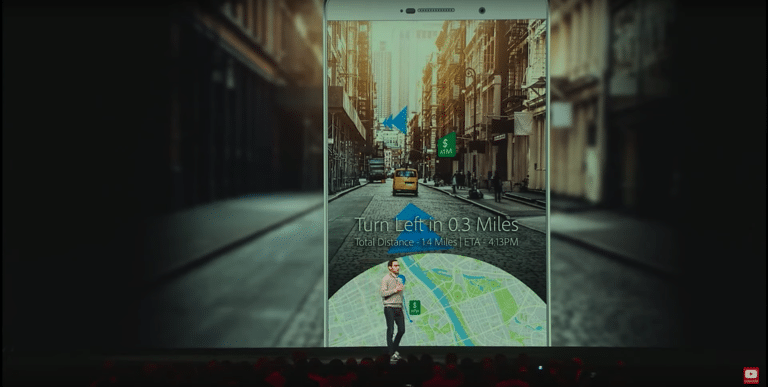
XR Talks is a series that features the best presentations and educational videos from the XR universe. It includes embedded video, as well as narrative analysis and top takeaways. Speakers’ opinions are their own. For a deeper indexed and searchable archive, subscribe to ARtillery PRO.
2019 was a “table-setting” year for our spatial future as momentum builds. Confidence signals include Brand spending on sponsored lenses and indicators for Apple’s eventual AR glasses. On the VR side, Oculus Quest is a beacon of hope in both quality and consumer traction.
That leaves the question of what 2020 will bear. Despite confidence signals, consumer traction lags far behind the high-flying expectations of 2016-2017’s hype cycle. The ensuing hangover has been more about measured optimism in the face of industry shakeout and retraction.
To synthesize where we are and where we’re going, our research arm ARtillery Intelligence recently presented findings from its report, Spatial Computing: 2019 Lessons, 2020 Outlook. We’re featuring a replay of that presentation as this week’s featured XR talk (video below).
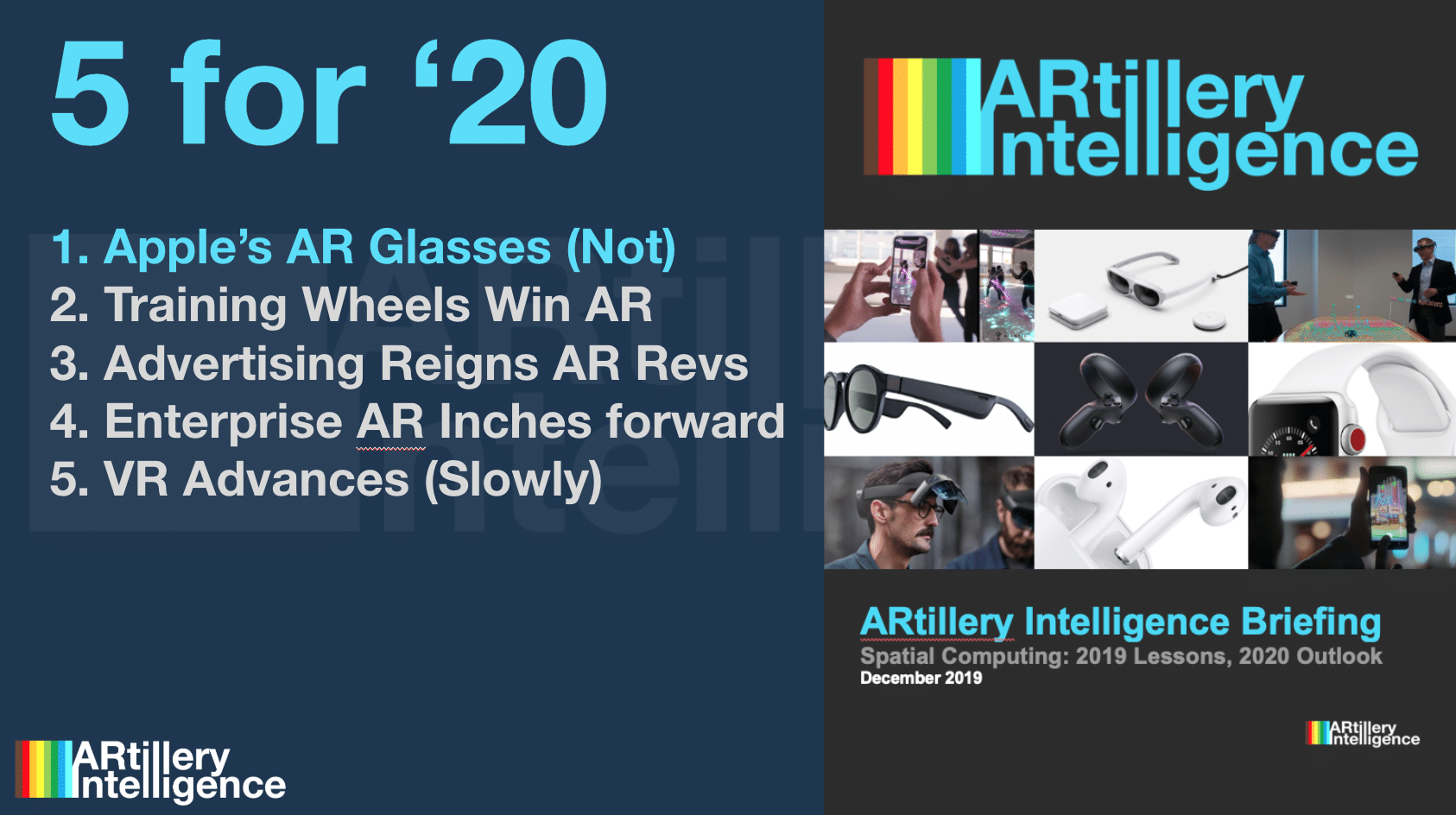
Apple’s AR Fate
Starting with the first prediction, the thing on everyone’s mind is the if and when of Apple’s rumored AR glasses. They likely won’t come in 2020 as many initially believed. The underlying technology and consumer readiness aren’t there, and Apple is rarely first to market.
ARtillery rather projects a mid-2022 market entrance (with a possible late-2021 announcement). It could be like the iPhone 1 in that it’s revolutionary, followed by years of evolutionary steps. We project that it will inflect the AR market, selling about half a million units in the first year.
Until that point, Apple is doing a lot to pave the roads for glasses’ arrival. That includes wearables — a product class that’s not only exploding but acclimating consumers to wearing tech on their bodies. There’s also ARkit, which likewise conditions users and developers to think in 3D.

AR Wins with Training Wheels
AR Insider readers know that one of our favorite AR topics is “training wheels.” The thought is that AR is too early and unproven to get users to go out of their way for it. The most successful forms of AR so far have positioned it as an organic and value-added component of existing behavior.
That includes Snapchat, which has applied VR to enliven already-popular multimedia sharing. It also includes Houzz, which has deep-rooted design philosophies to plant AR in the existing path-to-purchase to boost conversion rates. Apple’s Quick Look is evolving in the same direction.
Another example is Adobe Aero which brings AR to where its target market — creative professionals — already live. It integrates with the pervasive Creative Cloud to ease adoption. The point is that the AR winners in 2020 will practice this principle (along with other success factors).
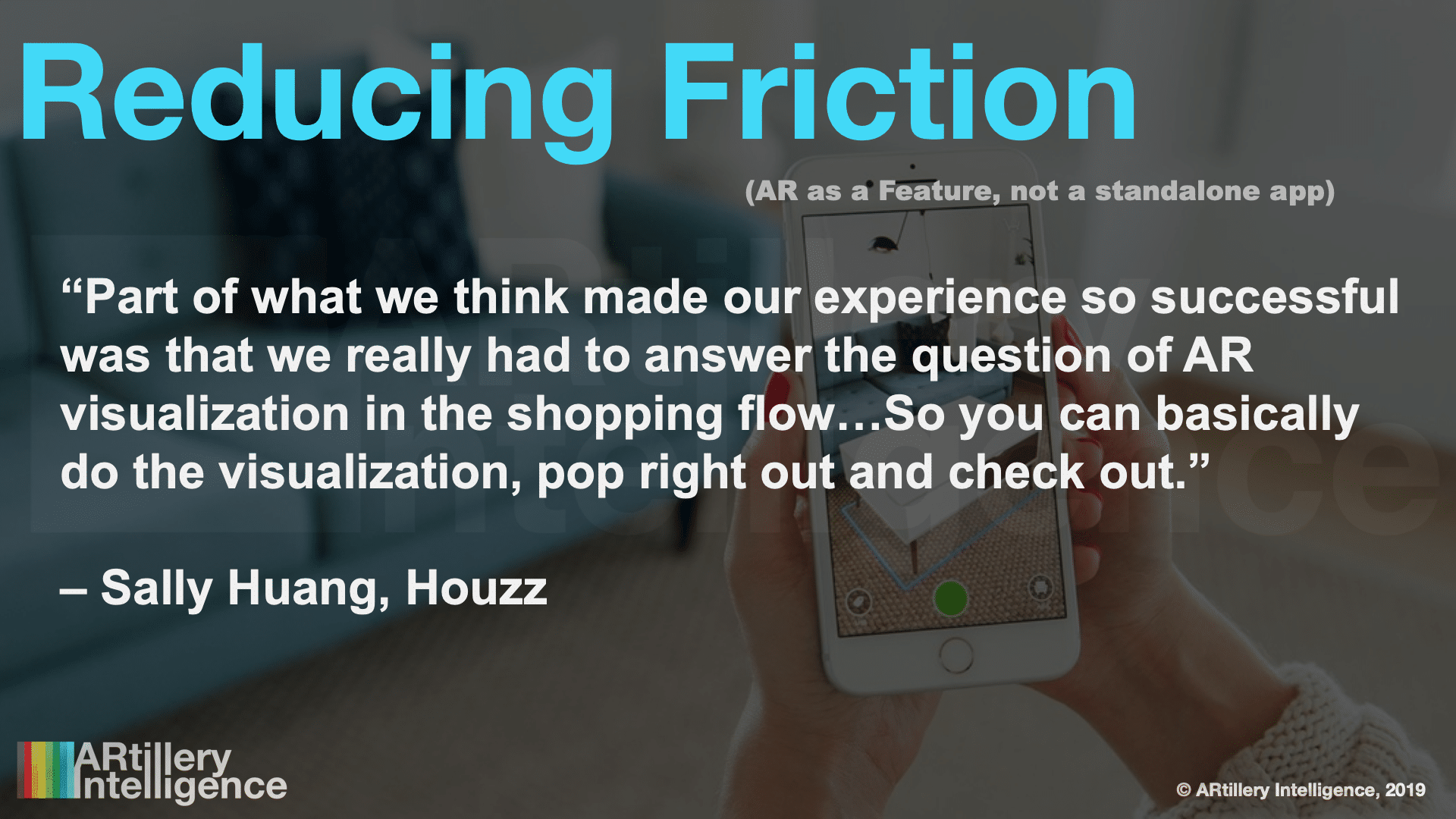
AR Advertising Keeps the Revenue Crown
Advertising is the leading source of AR revenue, mostly from branded lenses in Snapchat and Facebook. This will continue in 2020 as advertiser demand shows lots of momentum. Advertisers are drawn to immersive product visualization, not to mention glowing campaign results.
All of this has led to ARtillery Intelligence estimates of $1.58 billion AR ad revenue in 2019, growing to $2.6 billion this year. Snapchat continues to be the revenue leader, despite Facebook’s larger scale, due mostly to its focus on AR and alignment with its camera-forward user base.
But for the same reasons, Instagram could be a sleeping giant that helps Facebook eclipse Snapchat. Visual search a la Google Lens will be opportune as it inherits the high-intent dynamics that make search a valuable ad medium. Scalable 3D asset creation also looms as an opportunity.
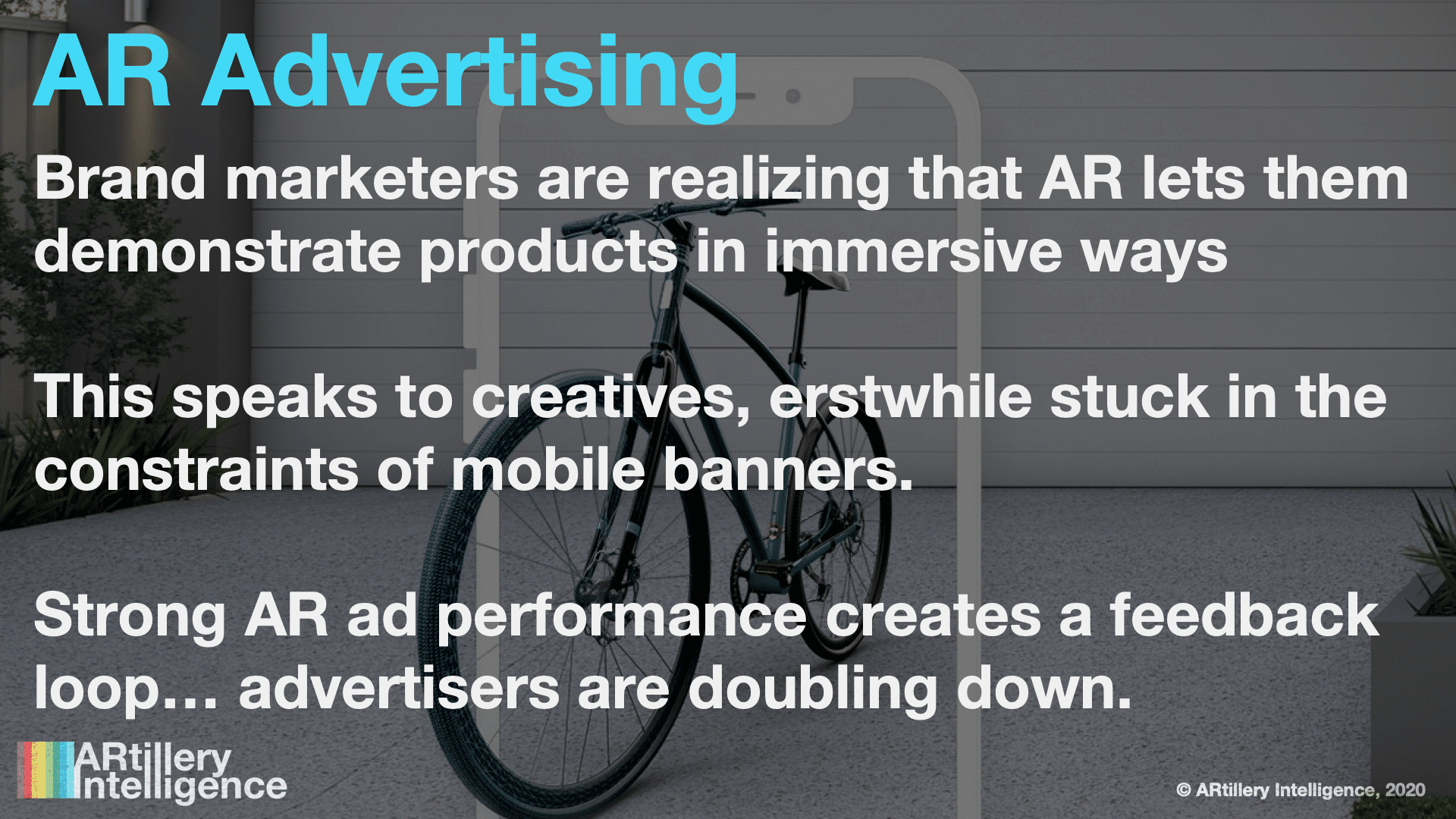
Enterprise AR is a Mixed Bag
Beyond consumer-based AR, it’s well known by now that there are clear ROI gains possible with AR-guided visualization in industrial settings. But despite the ROI figures that excite the C-suite, implementation can be stalled by fear and uncertainty from front-line workers and IT departments.
Observing these gating factors over the past few years, ARtillery Intelligence has pushed out it’s projected inflection point for industrial AR. There will come a tipping point followed by accelerated adoption — just like in enterprise smartphone adoption — but that might not come until 2021-2022.
Meanwhile, other forms of “enterprise” adoption could tip sooner. Specifically, B2B2C comprises enterprise AR adopters that build experiences for their consumers. That’s everything from retailers to brands to entertainment companies using AR tools like Unity, 8th Wall and Adobe Aero.

VR’s Steady Gains
Last on the list of predictions is VR’s evolutionary (not revolutionary) year. Oculus Quest will continue to mainstream VR gradually with a combination of easy setup, high-quality experience and loss-leader pricing. The latter gives consumers a device that’s cheaper than it should be.
Moreover, Quest and market share leader PSVR are priced at or under $399 — the point where demand inflects according to ARtillery’s consumer survey with Thrive Analytics. These two market leaders are also worth examining for their approach with product positioning and marketing.
Specifically, they’ve eschewed the arms race over specs that competitors tend to focus on. Instead they’ve taken a sort of Nintendo approach (a la Wii and Switch) to make it more of an “experience sell” with a fun persona. That plus simplicity will be a success factor to note in 2020.
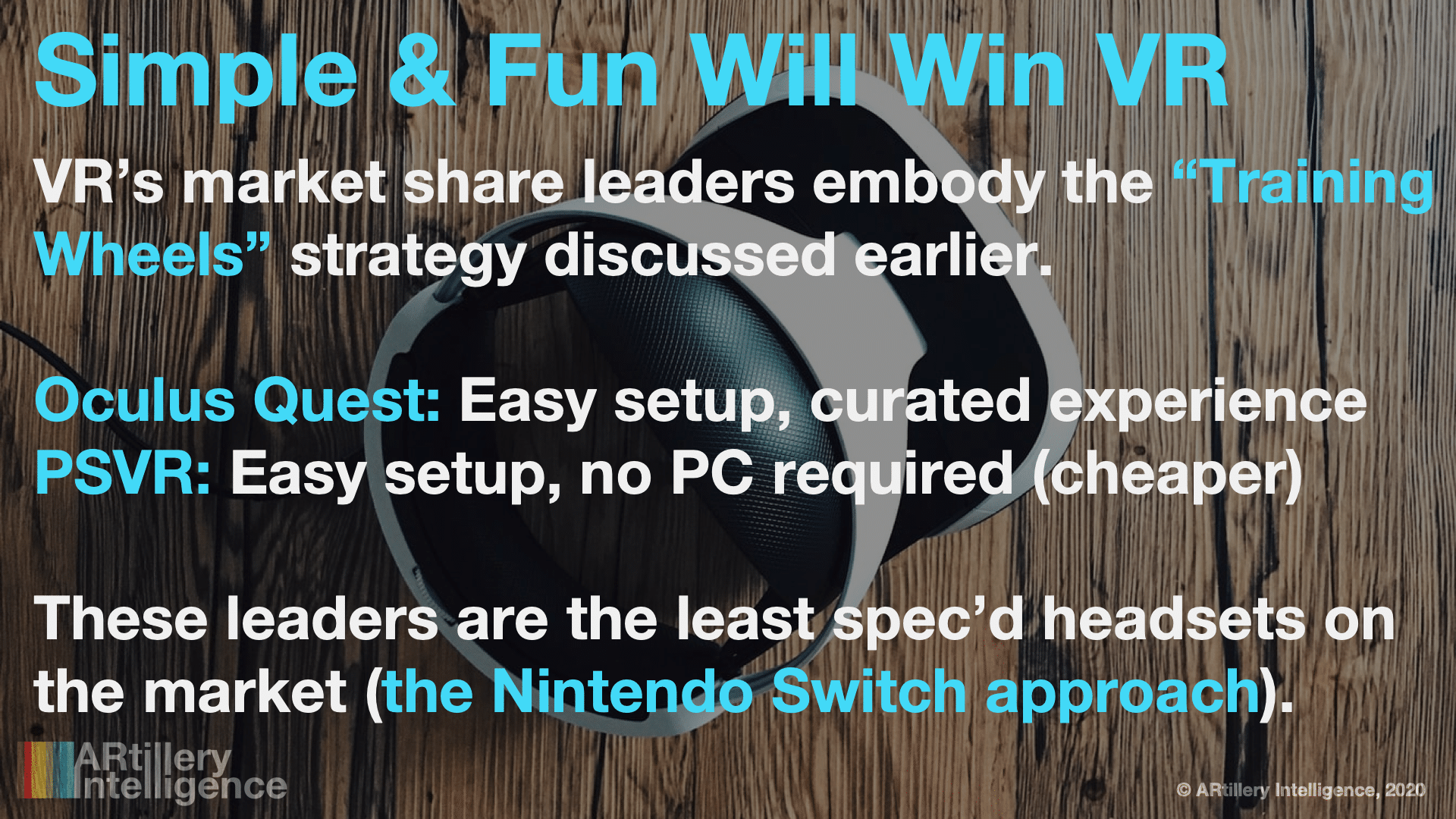
So there you have it… trends to watch in 2020. There’s of course a lot more to it, which you can see in the video below. We’ll keep watching these market events and more in 2020 to report what we see, and to course correct the outlook for spatial computing’s many moving targets.
For deeper XR data and intelligence, join ARtillery PRO and subscribe to the free AR Insider Weekly newsletter.
Disclosure: AR Insider has no financial stake in the companies mentioned in this post, nor received payment for its production. Disclosure and ethics policy can be seen here.
Header image credit: YouTube
